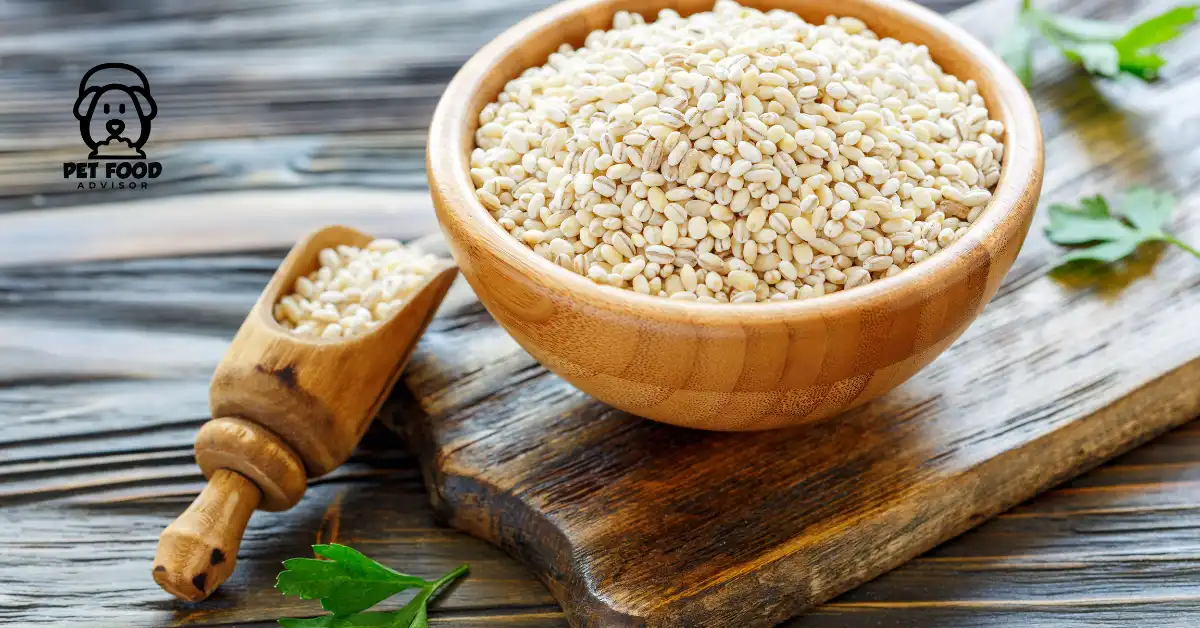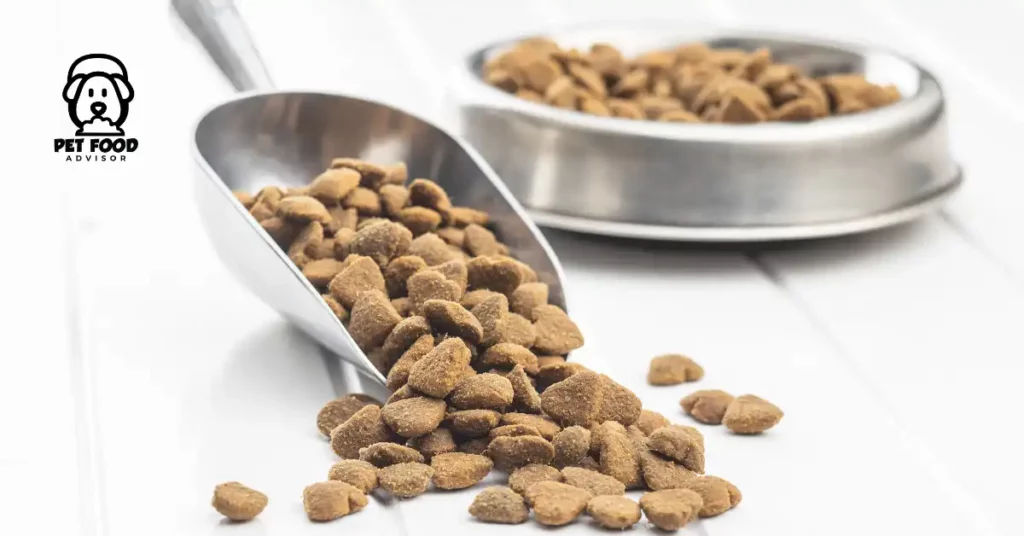Benefits of Ancient Grains Dog Food for Your Pet
When I talk about ancient grains, you might be curious about them. Well, they’re grain types that have mostly stayed the same over time. Unlike many plants and animals that develop, these grains have kept their original quality.
The ancient grains we eat today are the same as thousands of years ago. In dog food without wheat and other foods, ancient grains are processed less than other grains.
Ancient Grains in Dog Food
The ancient grains of dog food are the unchanged grains that are famous for human as well as dog food. Certain grains like wheat and rice might not be the best for dogs, but healthy whole grains can be beneficial. They help keep a dog’s skin, coat, and weight in good shape.
Another reason for the popularity of dog foods with ancient grains is a worry that grain-free diets could lead to a heart condition called dilated cardiomyopathy (DCM) in dogs. The FDA looked into this in 2018 and examined if diets rich in legumes (like peas and lentils) were linked to DCM. This caused a discussion about grains versus grain-free options.
The popularity of ancient grains also comes from their similarity to the seeds and grasses that dogs’ ancestors would have eaten in the wild. These “super grains” are part of human diets like the Paleolithic or “paleo” diet. The appealing flavors of ancient grains, with their nutty and earthy tastes, contribute to their appeal. Some dog food recipes, like the Limited Ingredient Chicken Recipe with quinoa, use these ancient grains.
Varieties of Ancient Grains
Amaranth
This grain has a nutty taste and a chewy texture, similar to couscous. It can be a side dish, like rice.
Millet
Full of protein and antioxidants, millet is a whole grain. It’s known for its human health benefits, like lowering blood sugar and cholesterol. Surprisingly, it’s also in birdseed.
Teff
Originating from Ethiopia and Eritrea, teff comes in various colors. It’s a staple grain there and can be turned into flour for making bread.
Sorghum
This ancient grain is gluten-free and often used as livestock feed. It’s also a popular food grain in Africa and Asia.
Barley
Belonging to the grass family, barley is a significant cereal grain grown in moderate climates. It’s among the first cultivated ancient grains, dating back thousands of years.
Quinoa
Gaining fame for its nutrition, quinoa is a whole grain. It’s a rice substitute, cooked similarly, and the plant resembles spinach.
Bulgar Wheat
With a history of over 4,000 years, bulgur wheat started in the Mediterranean region. It’s used instead of rice, couscous, barley, or quinoa in human cooking.
Benefits of Dog Food with Ancient Grains
Ancient grains of dog food are best to gain nutrition. This provides benefits to the dog’s health and is helpful for the dog owners. Refined grains don’t offer proper nutrition like white rice. But when you give ancient food to your dogs, they are best for providing complete nutrients because they have yet to go through extensive processing.
Refined grains lose essential nutrients during processing, including vitamins, minerals, and fiber. Dogs consuming these refined grains miss vital nutrients for their health and energy.
Digestive Gain of Ancient Grains Dog Food
For healthy dog nutrition, good digestion is crucial. If you want your dog to be healthy, then you need to ensure that it digest food properly. Ancient grains in dog food provide a digestion-friendly choice because of their prebiotics and fiber content. This is especially beneficial for dogs with food sensitivities.
These advantages extend to dogs struggling with weight management. Dogs struggling to digest ingredients like legumes may need to help maintain a healthy weight. Ancient grains, being easier to digest, can help improve weight management for these dogs.
A Nutritional Boost for Dogs
You must ensure your dogs receive good nutrition because it is essential for their health. When we talk about giving your dog food that is an excellent source of balanced and nourishing dog food is ancient grains.
They need protein and fiber to keep your dog satisfied and full of energy. Ancient grains such as quinoa or sorghum, commonly found in dog food, are rich in these essential nutrients.
Ancient grains are also a great way to give your dog essential vitamins. Vitamins like B, zinc, and magnesium provide them with energy and support their immune system and thyroid health.
Omega-3 in Wheat-Free Dog Food
Dogs receive benefits from natural antioxidants that are found in wheat-free dog food. These include omega-3 and omega-6 fatty acids, which help keep your dog’s skin and coat healthy.
Omega-3 fatty acids also support healthy blood pressure, cholesterol, and heart health. This is especially valuable for seniors and growing puppies, though it benefits dogs of all ages.
No Unwanted Fillers
Superfoods for dogs use ancient grains due to their minimal processing. The aim is to create high-quality dog food by minimizing processing, unlike lower-quality dog foods that contain unsuitable fillers like soy and wheat. It can lead to digestion issues, and ancient grains dog food avoids these problematic ingredients.
Easy Digestion with Ancient Grains
Ancient grains are easy on your dog’s stomach as it quickly digests them. This results in a progressive and steady absorption of nutrients.
Fast absorption of nutrients can lead to sudden spikes in a dog’s blood sugar levels and potential digestive troubles. The slow and steady nutrient absorption of ancient grains helps prevent such issues.
Switching to Ancient Grains Dog Food
If your dog isn’t currently eating superfoods for dogs, consider switching to ancient grains. But it’s essential to do this switch carefully to prevent tummy problems. Changing too quickly can upset your dog’s stomach.
How to Make a Gradual Change
When you suddenly change your dog’s food, it can cause tummy issues like vomiting, diarrhea, and a bit of tiredness. To avoid this, it’s best to introduce the new food slowly.
Start by giving your dog 3/4 of their regular food and 1/4 of the new food. Keep this mix for a day or two. Then, give your dog half their usual and half the fresh food for the next day or two.
Keep this gradual shift until your dog entirely eats the new food. This way, your dog’s body can get used to the fresh nutrients. This method also works well for dogs that can be picky about their food.
Balancing Grains Right
The amount of grains matters greatly, especially when they’re whole grains. Ancient grains of dog food is full of fiber, a carbohydrate that can’t be digested. When given in sensible portions, this fiber helps keep the colon moving. It aids in making and passing stool and prevents constipation. Using too much fiber can cause issues like not absorbing enough nutrients and irregular bathroom habits.
Carbohydrates that can dissolve in water are a good energy source. However, since many pets tend to gain weight, their diets shouldn’t have too many of these carbs. But, sometimes, they’re needed to create the right texture in certain pet foods, like kibble.
In diets without grains, ingredients such as potato or sweet potato are often used to get the proper starch content. But these ingredients have less indigestible fiber and fewer nutrients compared to whole ancient grains.
Conclusion
Ancient grains of dog food offer various benefits for your pet’s health and well-being. These nutrient-rich grains contribute to balanced nutrition and support digestive health. Their natural origins and essential nutrients make them valuable to your dog’s diet. By providing a wholesome energy source and essential vitamins, ancient grains contribute to your pet’s overall vitality. Consider incorporating them into your pet’s diet to ensure optimal health and happiness.





